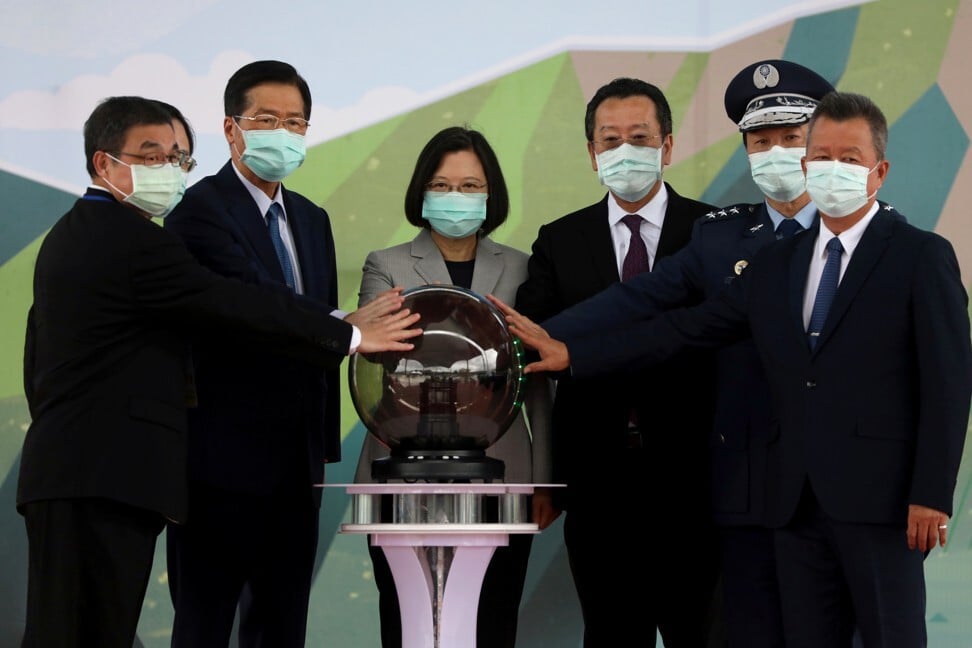
New F-16 fighter jet maintenance centre gives Taiwan an edge in defence and striking ability: President Tsai
- Collaboration between Taiwan’s Aerospace Industrial Development Corporation and Lockheed Martin is expected to draw ire from Beijing
- As first Indo-Pacific F-16 service centre, Taiwan’s new facility is expected to one day service fleets from other Asian nations
“It also marks an important milestone in the development of Taiwan’s defence industry and promotion of its aerospace industry internationally,” she said at the centre in Shalu in central Taiwan.
Tsai said a solid defence industry could help boost Taiwan’s defence capability and safeguard the sovereignty of the self-ruled island. She stressed that promotion of the island’s defence industry signified its determination to defend itself.
“While the maintenance centre is able to largely shorten the maintenance time for our war jets, it is also able to increase the reliability of our warplanes, thereby ensuring our air supremacy on the front line,” Tsai said.

Taiwan is facing growing military threats from Beijing, which considers the island a wayward province that must be returned to the mainland fold, by force if necessary.
And the US approved the sale of an US$8 billion package of 66 F-16C/D Block 70 fighter jets and related equipment to Taiwan in August last year. With the planned delivery of the 66 jets by 2023, Taiwan would be the largest operator of F-16s in the region with an expected fleet of 208 jets.
The centre will provide maintenance, repair, overhaul and upgrade the capability for F-16 Fighting Falcon multi-role combat aircraft, according to the island’s plane maker.
Lockheed Martin was expected to transfer supporting technologies to Taiwan as part of wider industrial cooperation in line with the Tsai government’s objective of ensuring that maintenance and support activity for frontline military equipment was carried out locally, the AIDC said.
It added that the strategy was aimed at both ensuring military capability and boosting industrial skills and expertise in Taiwan.
Locally, the centre is expected to generate at least NT$79.5 billion (US$2.7 billion) in revenue in the next 30 years and create 600 jobs a year, with NT$200 billion in overall value, including those created by mid and downstream suppliers, the AIDC said.
Corporation chairman Hu Kai-hung said that in addition to supporting the island’s F-16 fleet and further developing Taiwan’s aerospace industry, the company also wanted to attract business from other F-16 owners in the region.
DPP legislator Lo Chih-cheng said the centre should initially focus on servicing the island’s own F-16 fleet. Expanding a service to other countries would be the next-stage operation, given that the cost of repair and maintenance would be cheaper than having the jets sent back to the US.
Opposition Kuomintang legislator Lu Yu-ling said the centre must first prove its effectiveness before other countries would want their jets serviced at the Taiwan centre.
Countries such as South Korea, Singapore, Thailand and Indonesia are among Lockheed Martin’s F-16 buyers, with each owning between 33 and 180 of the jets. India is also a potential client.

